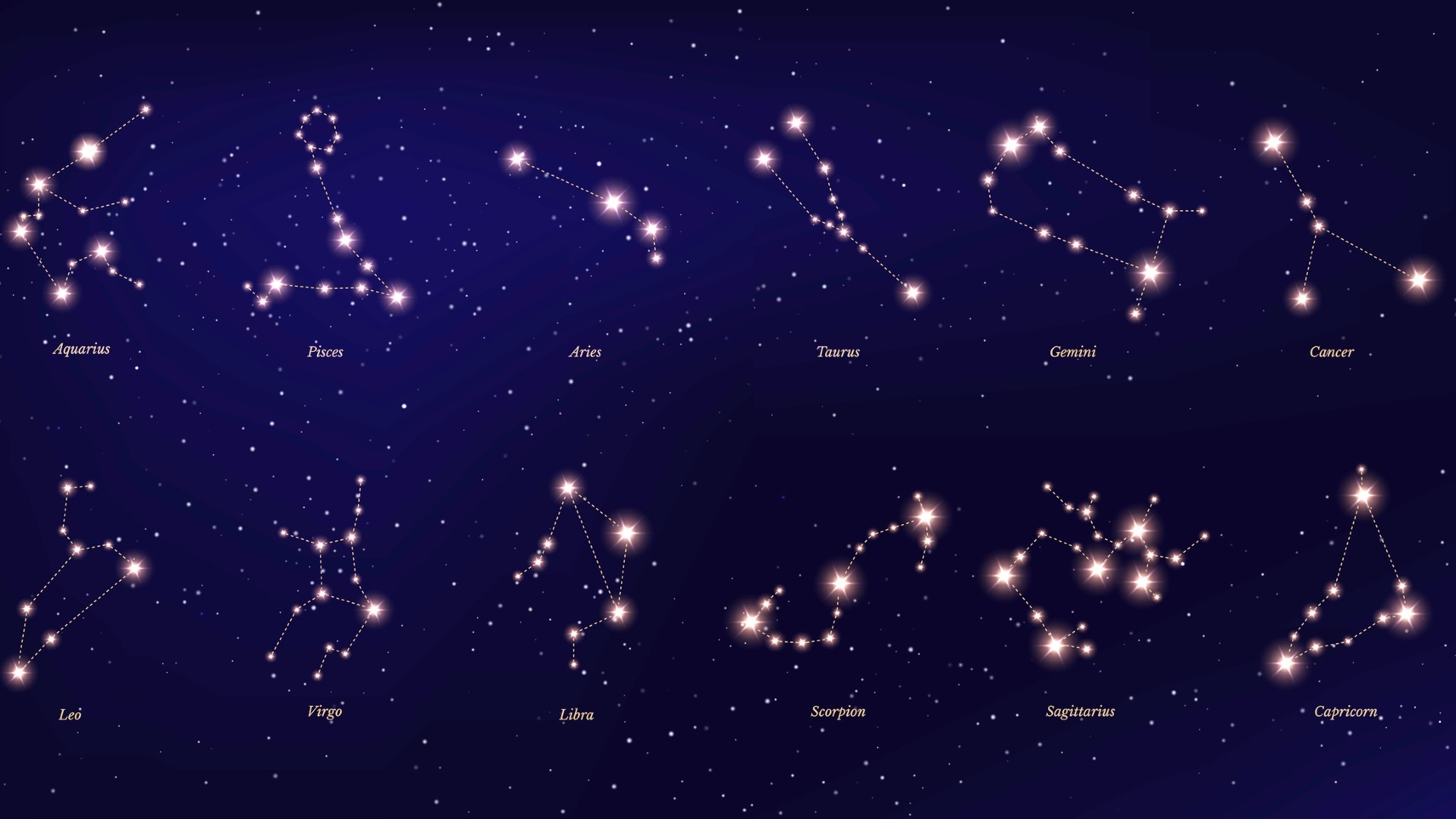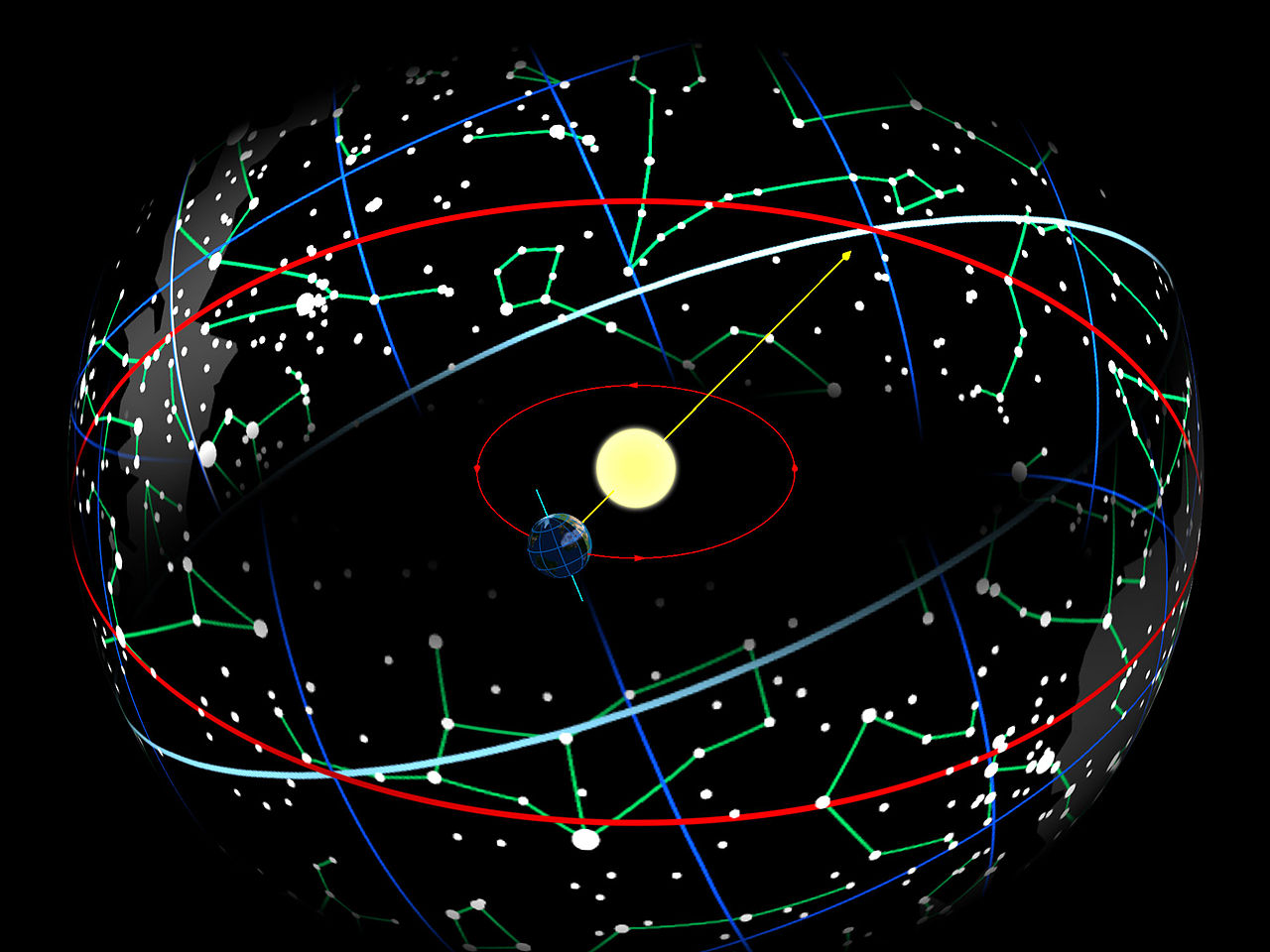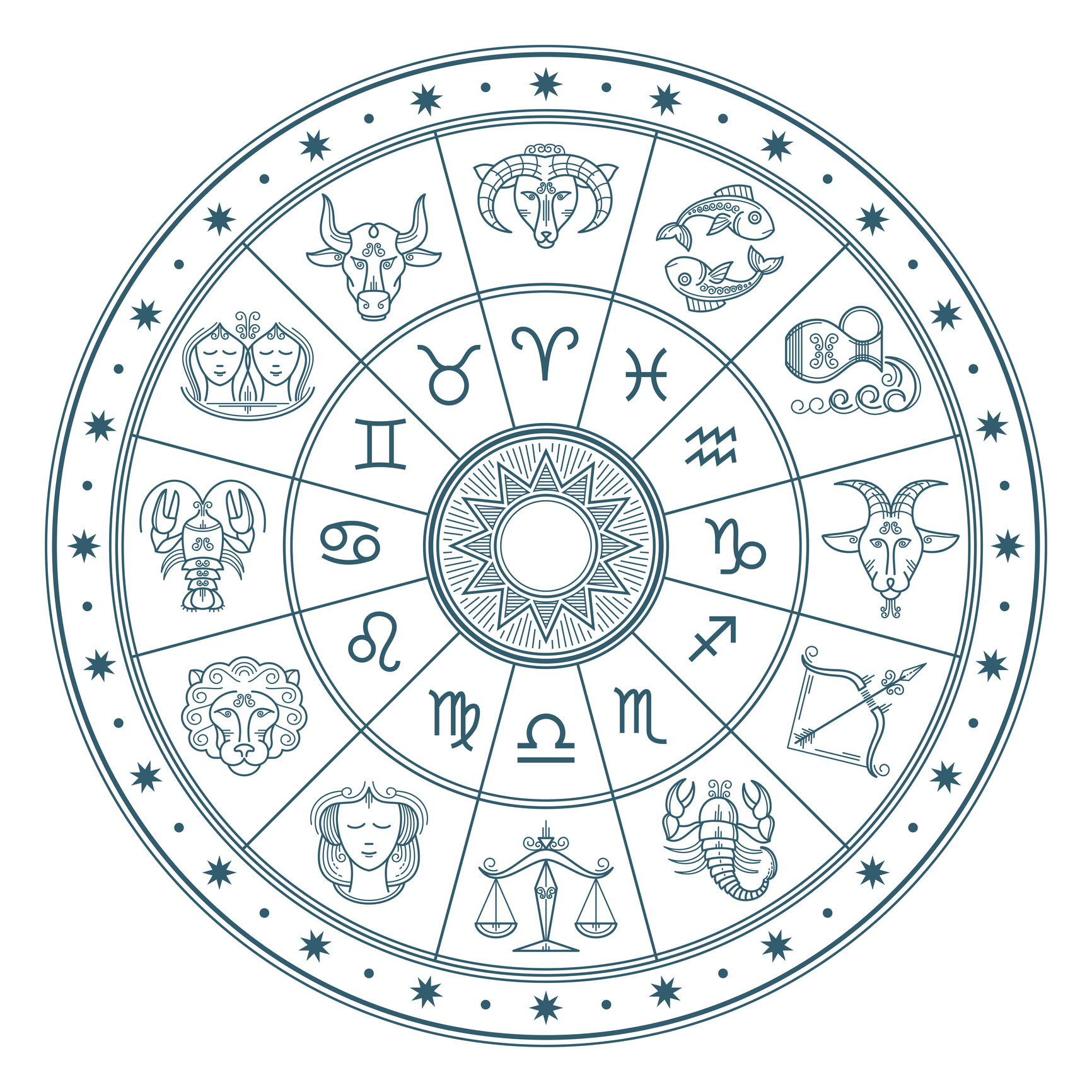What's your zodiac sign? (It may not be what you think it is)
The discoveries humanity has made about Earth and the stars over the past 2,000 years haven't changed the key dogmas of astrology.

Whether you believe astrology is merely a hold-over from less enlightened times before our understanding of the cosmos burgeoned, or you believe that the position of the stars and planets actually hold influence over our day-to-day lives and can even determine our character, there is no denying the influence astrology has had in society.
At the heart of astrology is the zodiac — a belt-shaped region of the sky that extends approximately 8° north or south of the apparent path of the sun through the sky — and its 12 astrological signs.
Though astrology seems determined by the movement of Earth through space and the positions of astronomical objects in the sky, astronomy and astrology are extremely different disciplines.
What is a zodiac sign?
On the surface, the determination of a zodiac sign seems devilishly simple. As the Earth orbits around the sun, our star appears in front of different constellations — collections of stars that trace out the shapes of familiar objects usually animals.
These zodiac signs are Aries, Taurus, Gemini, Cancer, Leo, Virgo, Libra, Scorpio, Sagittarius, Capricorn, Aquarius, and Pisces, each of which occupies 30 degrees on the great circle that represents the sun's annual path through the sky in front of the constellations — also known as the ecliptic.
The zodiac was initially developed around 600 BCE and its zero point was defined as the point that the ecliptic intersected with the celestial equator — the great circle of the terrestrial equator on the celestial sphere.
This intersection is also known as the vernal equinox and the spring equinox in the Northern Hemisphere because it is considered the first day of spring.
Breaking space news, the latest updates on rocket launches, skywatching events and more!
2,200 years ago this zero point occurred in Aries, hence its name the "first point of Aries." As a result, Aries the constellation occupied the first 30 degrees of the ecliptic; from 30 to 60 degrees was taken by Taurus, and Gemini was positioned from 60 to 90 degrees. The other astrological signs of the zodiac were categorized in a similar way, each grabbing its own 30-degree slice of the ecliptic.
The problem was, that these ancient astrologers weren't aware of a 'wobble' in Earth's motion that would seriously disrupt their system as time progressed.
Earth's wobble skews zodiac sign dates
The cause of the shifting in zodiac signs is precession, the slight 'wobble' Earth experiences as it orbits the sun.
The gravity of the moon and the sun, and to a lesser extent the planets, acts on Earth's equatorial bulge — caused by the planet's rotation — to shift its axis of rotation. Known as precession this 'wobble' has a 25,800-year cycle.
To picture this precession, imagine a literal pole extending out of Earth at the North Pole. Watching this pole over the course of 25,800 years, we would see it trace out a circle over the Earth.
This means that the North Pole isn't always pointing in the same direction as the background stars of the celestial sphere, and this effect accumulates. Over the last 2,500 years, the intersection of the celestial equator and the ecliptic has drifted west along the ecliptic by 36 degrees — about one-tenth of its length.
Precession has also had the effect of shifting the equinoxes of Earth — the two points of the year at which day and night have equal lengths — along the ecliptic. For this reason, it is often called the precession of the equinoxes.
As a result, the astrological signs have also shifted one-tenth around the elliptic to the west in relation to the background stars. That means that each period now occurs about one-tenth of a year — roughly a month — later than it did when astrology was being devised.
But horoscopes published in papers and magazines don't follow this astronomical system. As result zodiac signs no longer align with the position of the sun.
For example, the astrological sign Taurus is said to govern the period between April 20 and May 20, as that's the constellation that the sun once appeared to be in during this period.
So taking 2010 as an example — an 'average year' slotted between two leap years — a child born on April 26, 2010, will be a Taurus despite the fact the sun was actually in the constellation Aries on that day and wouldn't move into Taurus until May 14.
That means if the founders of the zodiac had been aware of precession, she'd have been an Aries rather than going through her whole life as a Taurus. There's another problem with the zodiac as astrologers see it and the position of the sun along the elliptic. Astrologers actually ignore the 13th constellation on the ecliptic — Ophiuchus — instead, sticking to the 12-sign zodiac. The ancient stories of the Babylonians' — who are often credited with originating astrology — acknowledge there were 13 constellations in the zodiac, but Ophiuchus was chosen to be left out.
What's your "real" zodiac sign?
Below are the dates that a truly astronomy-based zodiac would give each astrological sign, while the dates that the astrology-based system devised two millennia ago are given in brackets.
Capricorn — Jan 20 to Feb 16 (Dec 23 to Jan 21)
Aquarius — Feb 16 to Mar 11 (Jan 22 to Feb 20)
Pisces — Mar 11 to Apr 18 (Feb 21 to March 19)
Aries — Apr 18 to May 13 (March 20 to April 20)
Taurus — May 13 to Jun 21 (April 21 to May 21)
Gemini — Jun 21 to Jul 20 (May 22 to June 22)
Cancer — Jul 20 to Aug 10 (June 23 to July 22)
Leo — Aug 10 to Sep 16 (July 23 to August 22)
Virgo — Sep 16 to Oct 30 (August 23 to September 22)
Libra — Oct 30 to Nov 23 (September 23 to October 22)
Scorpius — Nov 23 to Nov 29 (Oct 23 to Nov 22)
Ophiuchus — Nov 29 to Dec 17 (No astrological counterpart)
Sagittarius — Dec 17 to Jan 20 (Nov 23 to Dec 22)
Astronomy and astrology: What's the difference?
The clearest and most obvious difference between astronomy and astrology is the former is a science and the latter, isn't. This means that while astronomy — the study of everything outside Earth's atmosphere including stars, galaxies, other planets, and black holes — is based upon observation, testing, and empirical evidence, astrology is based on belief and little more.
"Astronomy is the scientific study of everything in outer space. Astronomers and other scientists know that stars many light-years away have no effect on the ordinary activities of humans on Earth," NASA said in tumblr post. "Astrology, meanwhile, is something else. It's the belief that the positions of stars and planets can influence human events. It's not considered a science."
Understanding Science, the website of the University of California Museum of Paleontology, points out that the inclusion of seemingly scientific trappings in astrology like star charts and the movements of astronomical objects leads some to consider it a science. However, its heavy reliance on anecdote as evidence — statements like "Hey, it works for me" — lead many to conclude that astrology is actually a pseudoscience.
There is also doubt whether the key ideas of astrology are testable — something most scientists agree is crucial to a scientific discipline. To be pitted against observations of the natural world, astrology would have to make specific and precise testable predictions.
However, most of the predictions made by astrology are extremely general and open to interpretation.
Despite how different they are today, astronomy and astrology share the same ancient roots. Both were strongly driven by a need to understand the movements of objects in Earth's celestial sphere.
As observations of the heavens became more precise and data grew, astronomy changed meeting the key criteria of science — changing when new evidence is discovered.
On the flip side of this, the discoveries humanity has made about Earth and the stars over the past 2,000 years haven't changed the key dogmas of astrology.
Additional reading
The solstices of Earth are tied to the history of astronomy and thus astrology. Read more about the winter solstice here.
Equinoxes also played a key role in the development of astrology. Read about the twice-yearly event known as an equinox here.
Bibliography
"Astrology And Astronomy In The Ancient World." Encyclopedia.com (2022). [acessed
"Your Astrological Sign May Not Be What You Think It Is." Space.com (2007).
"What is the zodiac?" EarthSky (2022). [https://earthsky.org/astronomy-essentials/what-is-the-zodiac/]
"Ecliptic." In the Sky, 2020, [https://in-the-sky.org/article.php?term=ecliptic]
"Astrology: Is it scientific?" Understanding Science (2002).
"Precession of the equinoxes." Britannica (2002).

Robert Lea is a science journalist in the U.K. whose articles have been published in Physics World, New Scientist, Astronomy Magazine, All About Space, Newsweek and ZME Science. He also writes about science communication for Elsevier and the European Journal of Physics. Rob holds a bachelor of science degree in physics and astronomy from the U.K.’s Open University. Follow him on Twitter @sciencef1rst.



